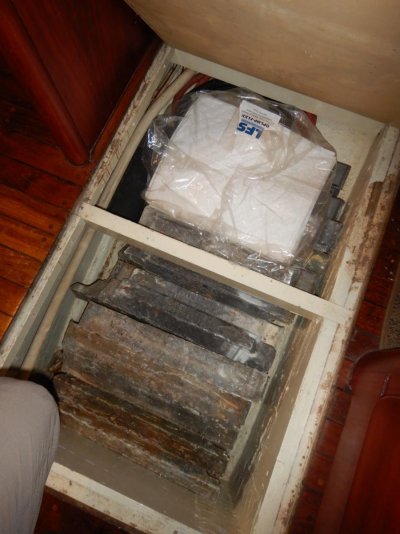mvweebles
Guru
- Joined
- Mar 21, 2019
- Messages
- 7,223
- Location
- United States
- Vessel Name
- Weebles
- Vessel Make
- 1970 Willard 36 Trawler
Part of installing a bow thruster on Weebles involved removing the concrete/punching ballast beneath the forward cabin. About 850 lbs of it. I have found ~65 lb lead pig ingots which are less than half the volume of the concrete. About a dozen of them need to nestle into the forward bilge of the hull.
I am looking for suggestions on securing them. Pouring resin or epoxy over them would generate a lot of heat and not sure that thick a pour is within design spec. I could do it in layers but would still be a thick pour. I thought about using floor leveling compound which is some sort of modified polymer cement that also has an exothermic reaction but less than two part epoxy or resin. Or concrete but would have to use traditional stones as aggregate.
Thoughts on best approach to securing ballast pigs?
Thanks in advance
Peter
I am looking for suggestions on securing them. Pouring resin or epoxy over them would generate a lot of heat and not sure that thick a pour is within design spec. I could do it in layers but would still be a thick pour. I thought about using floor leveling compound which is some sort of modified polymer cement that also has an exothermic reaction but less than two part epoxy or resin. Or concrete but would have to use traditional stones as aggregate.
Thoughts on best approach to securing ballast pigs?
Thanks in advance
Peter



